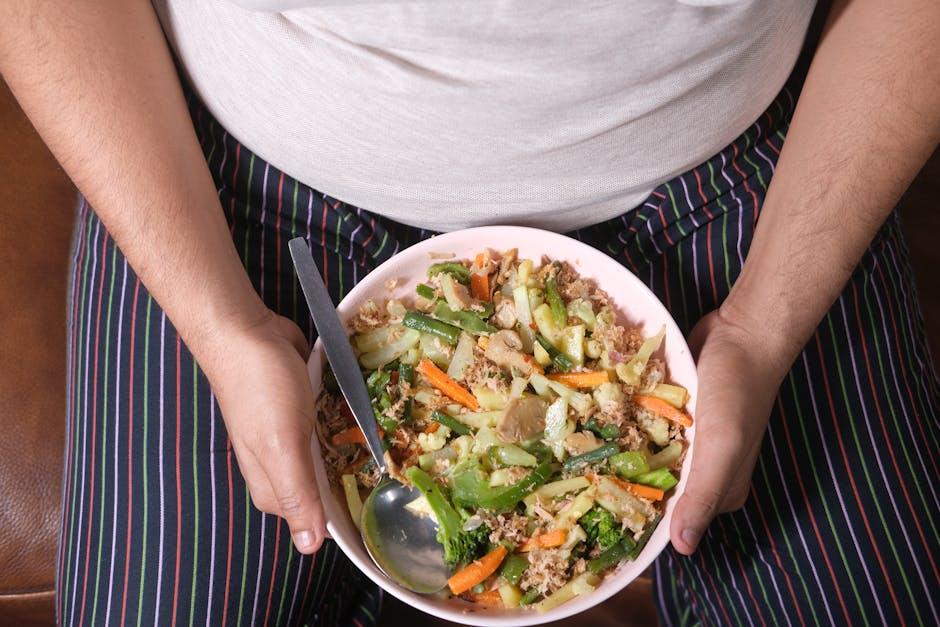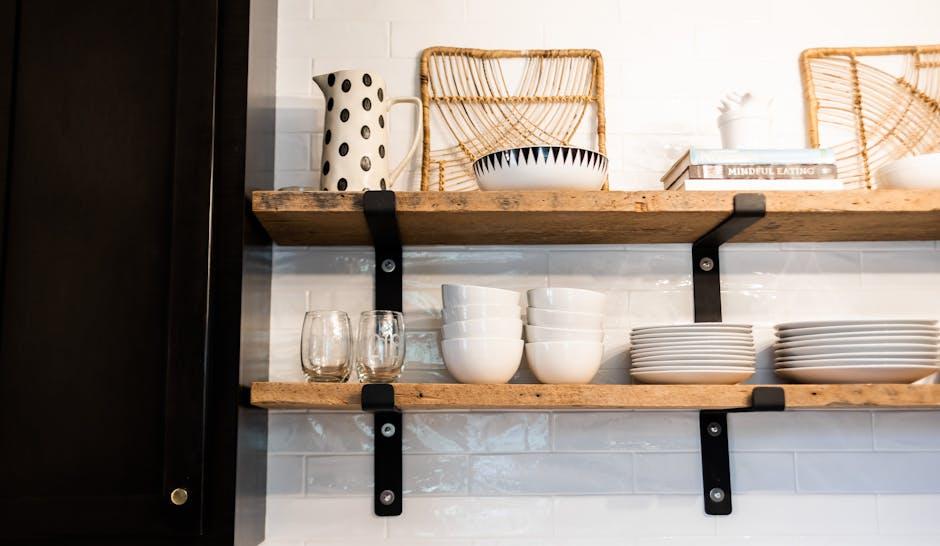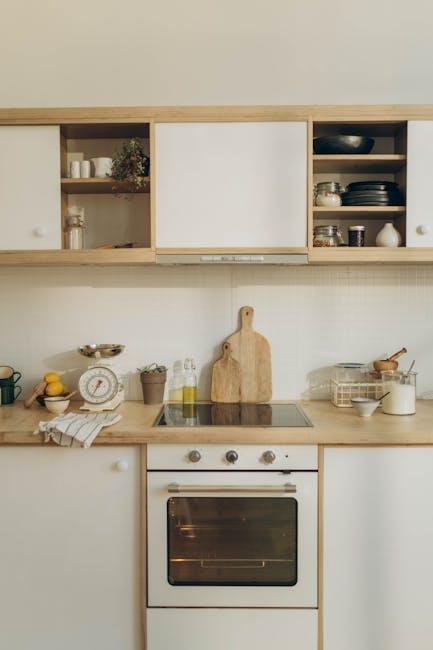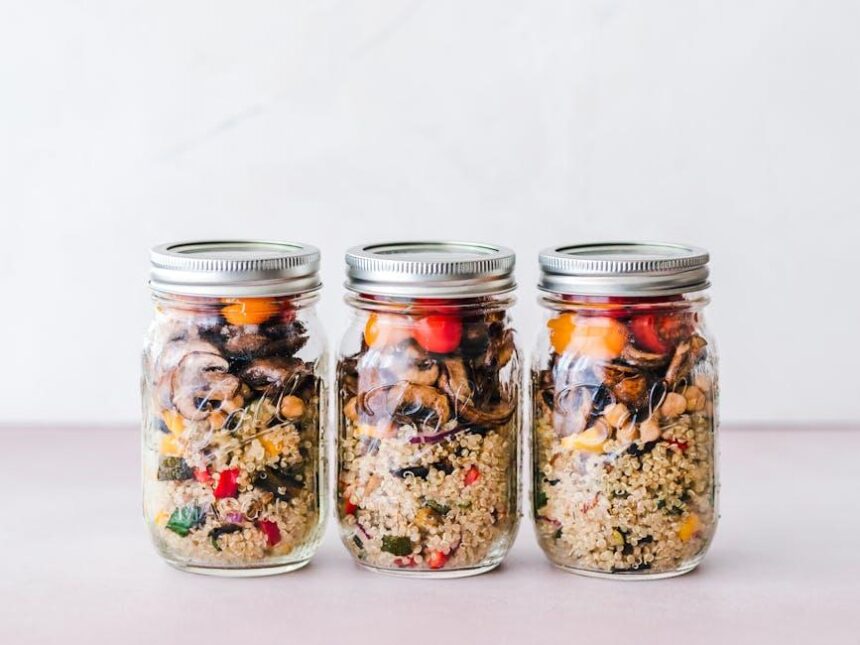In the quiet moments between hunger and satisfaction, the subtle shape of our dinnerware wields an often-overlooked influence. Choosing a bowl over a plate may seem like a simple swap, but this small change can dramatically steer the story of our portions-and, ultimately, our relationship with food. As we explore the dynamics of using bowls to guide how much we eat, we uncover a fascinating intersection of psychology, design, and mindful eating. This article delves into how the contours of our tableware can quietly shape our habits, offering fresh insights into portion control that go beyond calorie counting.
The Psychological Impact of Bowl Size on Portion Control

When it comes to managing portion sizes, the size and shape of the serving vessel can subtly dictate consumption levels. Bowls, by nature, create a perception of fullness with less food due to their curved walls and contained space. This phenomenon leverages the psychological cues our brains use to assess quantity. Unlike plates, which spread food out, bowls concentrate the food, making smaller portions appear more substantial and satisfying. This visual trick can help reduce overeating by providing a sense of completeness and satiety that might otherwise be lacking on flat surfaces.
Studies show that using smaller or deeper bowls influences how much people serve themselves, often without conscious awareness. Key factors include:
- Visual focus: Bowls naturally center the food, making the portion look ample.
- Depth perception: The curved sides create an illusion of volume, fooling the eye.
- Serving behavior: People tend to fill bowls to the brim, reinforcing portion control when bowls are smaller.
| Container Type | Portion Perception | Impact on Intake |
|---|---|---|
| Large Plate | Food appears sparse | May lead to overeating |
| Small Plate | Food looks adequate | Moderate intake |
| Bowl | Food feels abundant | Reduced intake |
How Curved Edges Can Help Manage Food Intake

Curved edges subtly encourage smaller servings without triggering that feeling of deprivation. Unlike the flat, hard boundaries of plates which can lead to heavy, unintentional spoonfuls, bowls with their gentle contour lines create a natural visual illusion of abundance. This allows the brain to register satisfaction sooner, effectively supporting mindful eating habits. In fact, the smooth flow of curved edges can make a meal look fuller, helping to curb overeating by giving a sense of completeness with less food.
When paired with portion control strategies, bowls can be powerful tools in managing intake:
- Visual enclosure – Curved rims frame food, promoting the appearance of a generous portion while actually holding less volume.
- Reduced plate waste – Smaller, curved containers discourage over-serving and reduce leftover food, minimizing impulse eating.
- Enhanced satiety signals – The close proximity of food within curved bowls can lead to slower eating, allowing the body’s full signals to kick in.
| Container Type | Average Volume | Portion Perception |
|---|---|---|
| Flat Plate | 600 ml | Neutral |
| Shallow Bowl | 450 ml | Fuller |
| Deep Curved Bowl | 350 ml | Most Satiating |
Choosing the Right Bowl Material for Mindful Eating

When it comes to selecting a bowl for mindful eating, the material plays a subtle but significant role in shaping your sensory experience and portion control. Ceramic bowls, with their cool, smooth surfaces, often invite slower eating and a heightened awareness of food textures and temperatures. They retain heat well, encouraging you to savor each bite. On the other hand, wooden bowls offer a natural, tactile warmth that connects you with earthy simplicity, promoting calmness and thoughtful eating habits. For those who seek convenience without sacrificing mindfulness, glass bowls allow you to visually appreciate the meal’s colors and layers, adding a visual cue for portion awareness.
Consider the following quick guide to help match your eating goals with the right bowl material:
- Ceramic: Ideal for warm dishes; encourages mindful pacing
- Wood: Best for salads and dry foods; fosters a connection with nature
- Glass: Superb for vibrant meals; enhances visual portion control
- Metal: Durable and lightweight; good for casual, on-the-go mindful moments
| Material | Best Food Types | Mindfulness Boost |
|---|---|---|
| Ceramic | Soups, stews | Retains heat, encourages slow eating |
| Wood | Salads, nuts | Natural texture enhances sensory awareness |
| Glass | Layered dishes, desserts | Visual transparency aids portion control |
| Metal | Snacks, quick meals | Lightweight for fresh awareness |
Practical Tips for Transitioning from Plates to Bowls

Switching from plates to bowls can feel like a small change, but it takes a bit of adjustment to get it right. Start by gradually introducing bowls of various sizes to see what feels natural for your meals. Opt for shallower, wider bowls rather than deep, narrow ones-this helps control portions visually without reducing the amount of food you enjoy. Pair your bowls with a well-measured serving spoon or ladle to avoid the temptation to refill immediately. Remember, the key is to make your meals look satisfying and colorful, using the bowl’s curved shape to your advantage by layering vibrant vegetables or lean proteins on top.
Beyond just the size and style of your bowls, consider a few practical tips to make the transition smoother:
- Meal prep in bowls: Pre-portion your meals directly in bowls, making grab-and-go easy while keeping servings consistent.
- Mindful eating: Use smaller utensils to slow down your eating pace and appreciate each bite.
- Visual balance: Fill half the bowl with veggies or salads, a quarter with protein, and the rest with grains or starches to create balanced portions.
| Meal Component | Recommended Portion |
|---|---|
| Vegetables | Half the bowl |
| Protein | Quarter of the bowl |
| Carbohydrates | Quarter of the bowl |
Closing Remarks
In the quiet shift from plate to bowl, we find more than just a change in dishware-we discover a subtle yet powerful tool to guide our eating habits. Bowls, with their deeper form and contained space, invite mindfulness, portion control, and ultimately, a gentler relationship with food. As we become more attuned to the shapes and sizes that frame our meals, perhaps the simplest switch-placing our nourishment in a bowl rather than on a plate-can ripple outward, influencing not only what we eat but how we think about consumption itself. In this small act lies the promise of a thoughtful move toward balance, one meal at a time.














